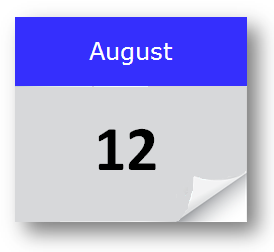In 1944 Nazi soldiers end the “Wola Massacre”: their week long systematic killing of 50,000 people in answer to the Warsaw Uprising.
As Soviet forces were approaching the Polish Capital city of Warsaw, the Polish Resistance saw the opportunity to fight back against their captors. The German troops were on the run throughout Poland with the Soviets following close behind. On the 1st of August 1944 the Warsaw Uprising began and tens of thousands of Polish resistance fighters fought the Nazi forces with the hope of regaining control of Warsaw and preventing the Nazi’s from rounding-up the Poles before the Russians arrived. But very shortly after the uprising began the approaching Russians stopped their advance into the city. By the 5th of August 1944 the Nazi forces in the city had managed to regroup and on that same day they began to execute thousands of civilians and resistance fighters. Entire families were ordered out of their houses and made to line-up before being shot. Many houses were burnt down to ensure that none of the family members escaped their fate. They used dogs on the piles of bodies to detect if any people were hiding, but some did manage to stay concealed. The “Wola massacre”, named after the suburb of Warsaw where it took place, continued for seven days and by the 12th of August they had killed 50,000 people (that’s almost 300 an hour). Their plan was to crush the spirit of the Polish inhabitants and prevent any further resistance, but the massacre had the opposite effect. The Polish resistance continued their fight without the aid of Russian troops.
There was no explanation to the Russian halt and although they had been in radio contact with Russian forces, who gave them the nod for the uprising to begin, radio silence commenced shortly after. The Russians had an airbase close by and required clearance before allowing aircraft into the area. British Prime Minister Winston Churchill requested help from the other allied leaders but received none. Without clearance granted from the Soviets Churchill ordered the RAF to begin low flying drops sending in supplies to the Polish fighters. The Soviets did eventually give clearance and the US also began dropping aid but Russia refused to allow bombers in the area and refused permission for US planes to land in their airfield. Some aid did get in but the Polish fighters saw no outside military assistance other than this despite many soldiers from the red army being camped very close.
By the end of September 1944 the last two suburbs of Warsaw, Mokotow and Zoliborz, had fallen and the Polish fighters were confined in the centre of the main city. With no supplies and no military assistance the remaining Polish resistance were forced to surrender on the 3rd of October 1944, after 63 days of fighting a much superior force.
Approximately 15,000 Polish Resistance fighters were killed throughout the uprising along with 250,000 civilians (about one quarter of the entire population of Warsaw). The remaining inhabitants were ordered to leave the city as the Nazi’s burnt it to the ground.
Soviet Forces entered the city in January 1945 and immediately recognised the newly established Polish Communist Government and the Soviets soon occupied the entirety of Poland.
The Soviet in-action and resistance to their allies in aiding the Polish Resistance was seen as a deliberate attempt allow the Germans to remove any resistance to their own goals in Poland. The World condemned their actions and they have been accused, but not officially, of being as guilty as the Nazi’s for the atrocities of the Warsaw Uprising.
